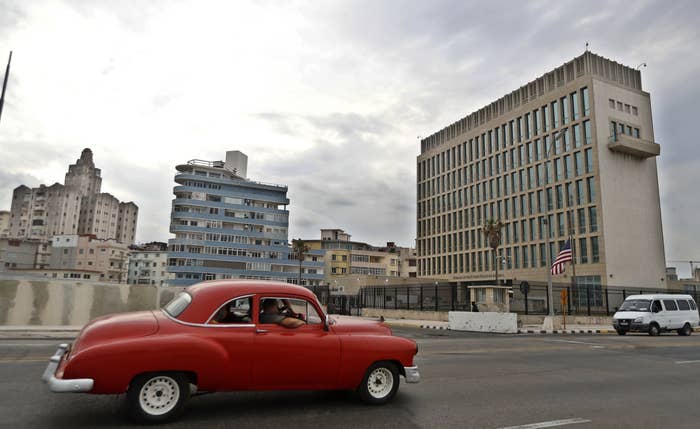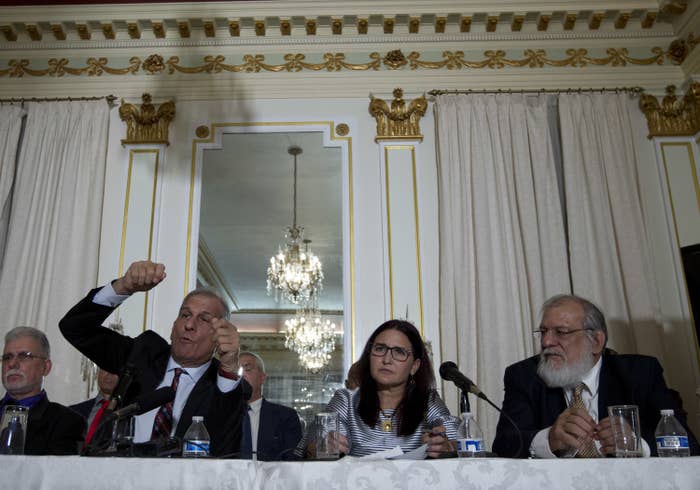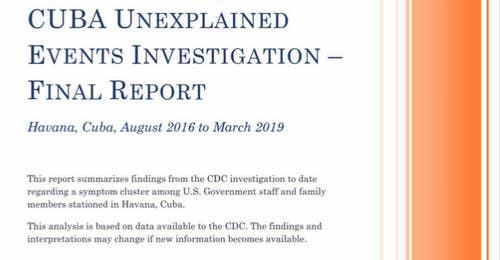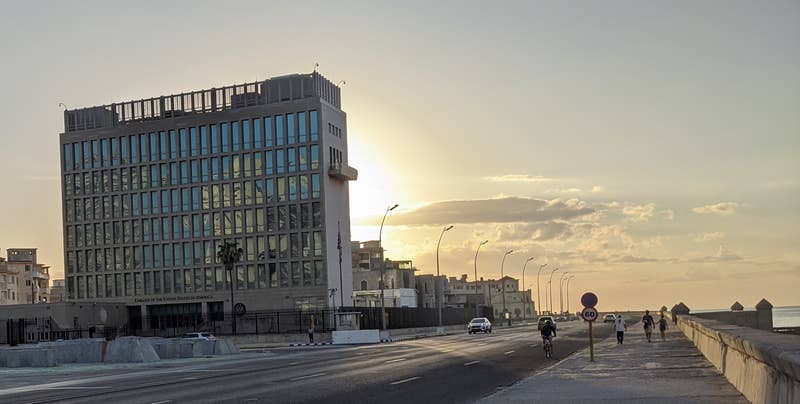Dharavi contained Covid-19 against all the odds. Now its people need to survive an economic catastrophe.
By Ari Altstedter and Dhwani Pandya
Photographs and Video by Zishaan A Latif
October 8, 2020, 3:00 PM
Normally, Khwaja Qureshi’s recycling facility in Dharavi, the slum in Mumbai, would be no place for three newborn tabby kittens. Before efforts to contain the novel coronavirus idled much of the Indian economy, the 350-square-foot concrete room was a hive of nonstop industry. Five workers were there 12 hours a day, seven days a week, dumping crushed water bottles, broken television casings, and discarded lunchboxes into a roaring iron shredder, then loading the resulting mix of plastic into jute sacks for sale to manufacturers. But during a recent visit, the shredder was silent and the workers gone, decamped to their villages in India’s north. That left the kittens plenty of space to gambol across the bare floor, nap on a comfortable cardboard box, or be amused by the neighborhood kids who came to visit.
Qureshi, a stout, thick-fingered man of 43 whose father founded the operation, mostly ignored his feline workplace companions. He’d been spending his days sitting on a plastic chair, drinking cup after cup of milk tea and chatting with other Dharavi entrepreneurs, all of them part of Mumbai’s fearsomely efficient but completely informal recycling industry, who stopped by to talk business. The consensus was pessimistic. India’s economy is in an historic slump, and less economic activity means fewer things being thrown away—and also less demand to make new products from the old. No one had much hope that things would pick up soon.

▲ Khwaja Qureshi is waiting for his employees to return.
The irony is that Dharavi, which has a population of about 1 million and is probably the most densely packed human settlement on Earth, has largely contained the coronavirus. Thanks to an aggressive response by local officials and the active participation of residents, the slum has gone from what looked like an out-of-control outbreak in April and May to a late-September average of 1.3 cases per day for every 100,000 residents, compared with about 7 per 100,000 in Portugal. That success has made Dharavi an unlikely role model, its methods copied by epidemiologists elsewhere and singled out for praise by the World Health Organization. It’s also a remarkable contrast to the disaster unfolding in the rest of India. The country has recorded more than 6.5 million confirmed cases—putting it on track to soon overtake the U.S.—and over 103,000 deaths.
Dharavi’s economic calamity, however, may be just getting started. Its maze of tarpaulin tents and illegally built tenements and workshops have traditionally served as a commercial engine for all of Mumbai, a frenetic crossroads of exchange and entrepreneurship at the heart of India’s financial capital. Before the pandemic, it generated more than $1 billion a year in activity, providing a base for industries from pottery and leather-tanning to recycling and the garment trade. Deprivation abounded, but Dharavi could also be a social accelerator, allowing the poorest to begin their long climb to greater prosperity—and to joining the consumer class that powers the $3 trillion Indian economy. Qureshi’s own family is a case in point. His father was born in the hinterland to a poor tenant farmer but moved to Dharavi to work in a textile factory, getting into the recycling business after he realized the value of the plastic packaging that new spools of thread arrived in.

▲ Kiran Dighavkar at an isolation center.
Led by an energetic municipal manager named Kiran Dighavkar, who was also in charge of the slum’s Covid-19 response, people in Dharavi are now trying to restart their economic lives without seeding new outbreaks. Their success or failure will be an important example for similar places around the world—areas that are home to as much as a sixth of the global population and which no government hoping for a durable recovery from the virus can afford to ignore. Whether in Nairobi’s Kibera or Rio de Janeiro’s hilltop favelas, slum economies are inextricably linked to the cities around them. In some countries their inhabitants account for 90% of the informal urban workforce—an army of construction laborers, small-time vendors, assembly-line helpers, and restaurant servers that developing world metropolises rely on to function. Those jobs are never easy, but they are often preferable to the monotony of rural poverty.
The challenge in Dharavi is to reclaim this vitality safely. “Now we have to live with this disease,” Dighavkar said in an interview at a temporary hospital, one of several he’d established to handle Covid-19 cases. “Dharavi is a hub of activity, and we cannot let it go.”
Watch: How India’s Biggest Slum Contained Covid
Dharavi’s modern history dates to the late 19th century, when Muslim tanners, looking for a place to practice their odoriferous trade outside the limits of British-run Bombay, built a rudimentary settlement nearby. By the 1930s it was attracting other migrants: potters from Gujarat, crafters of gold and silver embroidery from north India, and leather workers from the Tamil-speaking south, among many others. All added their own living quarters, building with whatever materials they could find, giving little notice to the fact they were, technically, squatting on government-owned land.
As the Raj gave way to independent India and Mumbai’s population swelled, the teeming slum eventually found itself not on the city’s fringe but near its geographic center. By then, many of its tents and huts had been replaced by structures of brick, concrete, and tile, arrayed around communal wells and powered by electricity from the municipal grid—even though almost no residents had formal land title. There were far too many of them to evict, or ignore, and in the 1970s, vote-seeking politicians began to make small improvements, such as public latrines. By the time the area played a starring role in 2008’s Slumdog Millionaire, soaring housing costs in the rest of Mumbai had even made it attractive to some white-collar workers looking for affordable, centrally located housing.
Meanwhile, Mumbai’s government had begun floating ideas for a redevelopment, one that would replace lopsided squatters’ homes with modern apartments and move factories and workshops into purpose-built quarters, probably elsewhere in the metropolis. But successive consultations, proposals, tenders, and visioning exercises failed to settle on any plan. That was due in part to opposition from residents, who pointed out that even if renovations brought better housing, their jobs might be relocated to distant industrial parks.

▲ International Footsteps’ workshop.
Dighavkar, who is 37 and a civil engineer by training, came to Dharavi with modest ambitions. Last year he was named assistant municipal commissioner for G Ward North, a swath of Mumbai that includes the slum. His previous posting was in the historic core, where his signature project had been the construction of a viewing platform in front of Chhatrapati Shivaji Terminus, an architecturally spectacular Victorian rail hub, that allowed tourists to snap photos without dashing into traffic. He also proudly took credit for building the city’s costliest public convenience, a $122,000 toilet complex on a busy seaside promenade.

▲ Dr. Asad Khan (center) and Dighavkar at a field hospital.
With redevelopment plans in flux, Dighavkar’s superiors had little enthusiasm for putting significant money into Dharavi. So in his first months in his new role he focused on the middle-class neighborhoods at its edges, laying new sidewalks and making symbolic changes such as switching the figures on crosswalk signals from male to female.
Dharavi’s first coronavirus case was posthumous. In early April, a 56-year-old resident tested positive after he’d already died. There were only about 2,000 confirmed infections in India at the time, mostly traceable to international travel, and the news seemed to indicate a serious problem. A place with more people than San Francisco, crammed into an area smaller than Central Park, is hardly a promising environment for social distancing. As many as 80 people may share a single public toilet in Dharavi, and it’s not uncommon for a family of eight to occupy a 100-square-foot home. Infections were soon spreading rapidly, prompting the Mumbai government to impose draconian containment measures. Whole streets were sealed off behind checkpoints, with officers on patrol and camera-equipped drones buzzing overhead. With rare exceptions, no one could leave the area, not that there was anywhere to go: The rest of the city, and all of India, were locked down, too, though usually with much lighter enforcement.
▲ Near Qureshi’s recycling facility.
But to Dighavkar, the impossibility of keeping slum residents in their homes quickly became evident. At the very least, people had to come out to use the toilet, to fill water bottles from public taps, and to collect food packets donated by charities. Gradually he and his colleagues developed a more precise approach. Rather than waiting for infected people to announce themselves, the government began dispatching teams of health-care workers to find them, going door to door asking about symptoms, offering free fever screenings, and administering tests to those likeliest to have the virus. They commandeered wedding halls, sports centers, and schools as isolation facilities to separate suspected cases from the rest of the population. Those who tested positive were sent to hospital wards that had been dedicated entirely to treating Covid-19, while contact tracers raced to locate people they’d spent time with.
Some were reluctant to cooperate. Many people in Dharavi work in unlicensed businesses that are in perpetual danger of being closed, and have good reasons to avoid contact with the authorities. But Dighavkar’s workers gradually won their trust, thanks in part to residents returning from quarantine telling of a comfortable stay and competent care. By July the number of new cases had declined to an average of 10 a day, compared with 45 per day in May, although the figure has since ticked modestly upward.

▲ Valli Ilaiyaraaja in her Dharavi home.
Some scientists have suggested the impressive numbers aren’t entirely the result of public-health measures. Antibody surveys over the summer found that almost 60% of the population in certain Mumbai slums had coronavirus antibodies, indicating that a degree of herd immunity could be at work. But even the most fatalistic virologists credit Dighavkar’s model with keeping mortality low, with some help from a youthful population. At just 270 confirmed deaths, Dharavi has one of the lowest Covid-19 fatality rates of any urban area in India, and methods developed there are now being rolled out across the country as the disease tears through smaller cities.
“This is our own invention. Contactless entry”
The apparent containment of the virus in Dharavi, or at least of its worst effects, didn’t spare its people economically. Many have had experiences like those of Valli Ilaiyaraaja, who used to work as a cleaner for three families in a neighborhood near the slum, and said none would allow her back even after the national lockdown ended in June. Their apartment buildings had banned entry to outside help, out of fear that cleaners and cooks would bring the virus with them. Similar policies remain in place across the city.
This has resulted in some inconvenience for Mumbai’s middle and upper classes—one local company had to suspend sales of dishwashers because of an overwhelming volume of orders. But it’s a financial catastrophe for people like Ilaiyaraaja. She and her three young daughters now depend entirely on her husband, who lost his job as a welder during the lockdown and is making just 100 rupees ($1.37) a day loading trucks. That’s not enough to pay for the cost of traveling to their home village in South India, where they could live rent-free, nor to cover school tuition for the girls. So the family is in limbo, waiting both for the economy to pick up and for the stigma attached to slum dwellers to fade. “We are fed up with this virus,” Ilaiyaraaja said in her tiny tenement apartment, two of her daughters sitting shyly by her side, “and with waiting for this nightmare to be over.”
On a muggy summer day, seven anxious-looking people, all wearing masks, stepped off a minibus and into a large vinyl tent that had taken over a parking lot on Dharavi’s outskirts. The tent housed a 192-bed field hospital for Covid-19 cases and had been carefully designed to triage incoming patients without letting them spread the virus. Past the double doors the group entered a spacious holding area monitored by a thermal camera on a tripod. Just behind, in a sealed-off observation booth, Dr. Asad Khan issued instructions through a microphone while observing the camera feed on a monitor.
When the system detected a fever, the monitor was supposed to show a red box around a patient, while normal temperatures would prompt a green box. The trouble, though, was that all the boxes were green—not something a physician greeting confirmed coronavirus carriers would expect to see. This prompted Khan to query the new arrivals on why they’d been brought to his tent. A young man stepped forward as the group’s unofficial spokesperson, and after some back and forth, Khan learned that none of them had even been tested for the virus. They were contacts of positive cases and were supposed to have been taken to an isolation center, not the hospital. A few minutes later they climbed back into their vehicle and were driven away.
Dighavkar, watching from inside the booth, was pleased. A bus going to the wrong facility was a harmless mix-up, but letting seven potentially healthy people interact with infectious Covid-19 patients would have been a disaster. The thermal camera and Khan’s questioning had prevented that outcome—evidence, to Dighavkar, that the system was working. “This is our own invention,” he said of the camera-and-interview process. “This is the procedure. Contactless entry.”

▲ Dr. Khan screens patients.
He was conscious, though, that a system sufficient to contain the virus with the economy halted could be severely tested by the resumption of more activity. By July some parts of Dharavi were coming slowly back to life. Beggars had returned to intersections, though usually wearing masks as they shuffled from car to car. Fabric wholesalers had rolled up their steel shutters, while corner stores were again places for groups of local women to meet and chat.
What worried Dighavkar was the prospect of reopening factories—cramped, poorly ventilated places where laborers spend hours on end, elbow-to-elbow. “Once the factories start again, maybe we’ll get more cases,” he said in his office. In front of his broad wooden desk, someone had set up neat rows of chairs to allow subordinates to gather before him like students at an assembly. “We have to make sure safety measures are taken.” His most urgent priority was to get as much protective gear to workers as possible. The municipal government had been distributing masks, gloves, face shields, and sanitizer to factories for free, turning a blind eye to illegal operations in the hope that owners would accept help. Regardless of their official status, “we are here to take care of them,” Dighavkar said.
The future of Dharavi’s manufacturing sector may look like International Footsteps, a factory that makes sandals for Western mall brands such as Aldo. To get there, you must first turn off one of the slum’s raucous commercial drags and into a lane of decrepit buildings covered in tarps and corrugated steel sheets, which opens after a little while into something of a public square. There, if you skip between a puddle of foul water and a dead rat, then duck beneath a tangle of electrical wires, you’ll come to a dark, damp tunnel leading to what feels like a different world. In a pristine marble hallway, a multilingual sign asks visitors to apply some hand sanitizer from a dispenser on the wall. Just beyond is a bright workshop, where during a recent visit eight artisans sat cross-legged at workstations spaced about two feet apart—considerably less jammed-in than they would have been before this year. Managers had cleared out some upstairs storage space to allow more distance between each employee, and all of them were wearing disposable smocks, masks, and plastic face shields, purchased at the company’s expense. The protection raises costs, “but it’s required for the safety of everyone,” said floor manager Vijayanti Kewlani, who’d donned the same gear.
The problem, for International Footsteps as well as other businesses in Dharavi, is that “everyone” isn’t who it used to be. Only about two-thirds of the slum’s people are formal residents; the rest are rural migrants who traditionally slept on factory floors or shared rented rooms, returning to their hometowns a few times a year. But there was no government help to cover wages during the national lockdown, and it caused a severe crisis for these laborers. With snack bars and mess halls shut, even those who could afford food struggled to find enough to eat.

▲ Workers at International Footsteps.
Many had little choice but to go home, a journey that had to be made on foot, because the government had suspended train and bus services to contain infections. It was likely the country’s largest forced migration since Partition, the violent 1947 division of India and Pakistan—and had the unintended result of spreading the coronavirus deep into rural areas. With the global economic slump depressing activity in cities, a large proportion of the migrants have stayed in the countryside.
International Footsteps tried to keep connected with its workers, paying them 80% of their salaries for the first month of lockdown and 60% for the second. It also offered to cover the cost of transportation back to the city and is looking into securing more spacious housing—maybe even with the luxury of an attached toilet—for staff who return. But only 30% of its personnel have resumed their jobs, mostly Dharavi locals, leaving the company well short of the numbers it might need to fill large orders.
Suraj Ahmed was one of the few who’d come back—in his case from a small village in Uttar Pradesh. He couldn’t afford to live in the room he’d been sharing with two co-workers, because neither had yet returned. So the company was letting him stay on the premises for free, until he could find a more permanent arrangement. The visible precautions in the factory made him feel safer, Ahmed said as he attached a finely worked leather strap to the top of a new sandal, his wiry beard peeking out from under his mask. But he was more impressed with the 10% raise he’d received for coming back to work. “I have to earn a living,” he said.
Despite its absent workers and stepped-up protective measures, Dharavi could still provide an extremely hospitable environment for the virus—particularly if a rush of returning migrants reintroduces it at large scale. The only solution, Dighavkar says, is “screening, screening, screening,” an unrelenting effort to track down infected people and isolate them from the community. “It will be part of our continuous process from now on.”
The front line of Dighavkar’s plan will be made up of women. His department has assembled an army of almost 6,000 health workers and volunteers, mainly from Dharavi itself, who’ve been given thermometers, pulse oximeters, and basic training in how to spot Covid-19. The idea is to send them house to house, day after day, in continuous sweeps of every part of the slum, and to keep doing it until the end of the pandemic. It’s a substantial commitment of resources, but the human and economic toll of a renewed outbreak would be far larger.
One morning in July, after one of the heaviest monsoon rainfalls Mumbai had seen in years, about a dozen of these women gathered at a public hospital to collect their addresses for the day and suit up in protective gear. Some undertook a tricky maneuver that involved pulling the hems of their saris up and back between their legs, tucking the fabric behind their waists, to step into the white coveralls they’d been issued. After drawing the hoods over their hair, they looked a little like snowmen.

▲ Bhoyar prepares to visit Dharavi residents.
Sunanda Bhoyar was more practically attired, in a block-print tunic over billowy pink trousers, and donned her suit with ease. She was one of the group’s few professionals, a registered nurse assigned to guide the less-experienced workers. She soon set off into the heart of Dharavi’s residential quarter, a warren of footpaths and alleyways often too narrow for a pair of people to walk abreast. There was almost no sunlight, the result of haphazard additions that had pushed the buildings on either side to structurally questionable heights.
Bhoyar knew the way and soon found what she was looking for: the home of an elderly couple who’d just tested positive and were being treated in hospital. She told the young man who answered the door that everyone who lived in the house needed to go to a quarantine center for observation and testing. But the man, who said he worked as a sales manager at an insurance company, making him prosperous by local standards, was reluctant. He and his three brothers had four rooms, he said—plenty of space to isolate at home. Bhoyar wasn’t having it. She ordered everyone’s hands marked with indelible ink—also used in India to prevent people from voting twice in elections—to ensure they’d be brought to quarantine.
▲ Donning protective gear.
Soon, Bhoyar approached a neighbor, who was skeptical that he was at risk, claiming that he and his wife didn’t even know the people who’d been infected. Contact tracing suggested otherwise. Bhoyar patiently explained that the man’s 9-year-old daughter was friends with one of the brothers’ children, and often visited their house to play. The neighbor’s family wouldn’t have to quarantine, she said, but would be visited again to see if anyone had developed symptoms. As Bhoyar spoke, a city sanitation worker stepped forward to spray the house with disinfectant. Bhoyar soon gathered up her entourage of assistants to move on.

▲ Bhoyar instructing residents on protective measures.
This kind of tedious work has none of the technological glitz of an innovative treatment or the silver-bullet promise of an effective vaccine. But as the rain started to pick up again, Bhoyar said she was convinced that, in Dharavi, it would be enough to keep the virus at bay. “Precaution will be our key focus going forward,” she said—“social distancing, awareness related to hygiene, fever screening, and sanitization.” Even with the massive slum slowly coming back to life, Bhoyar added, “I’m not really scared.”




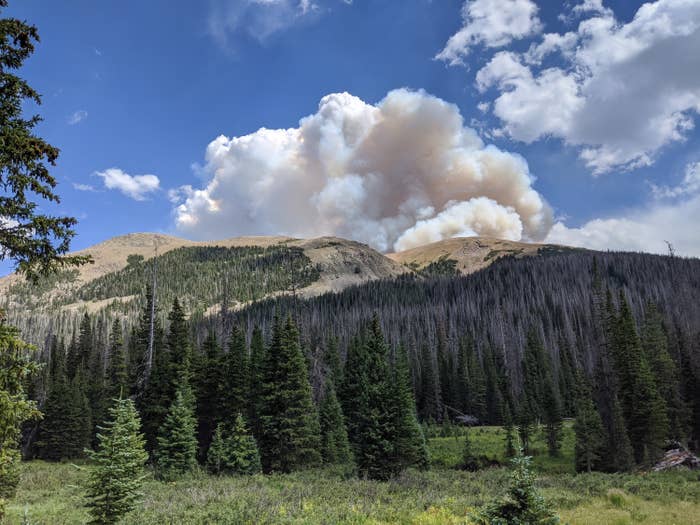

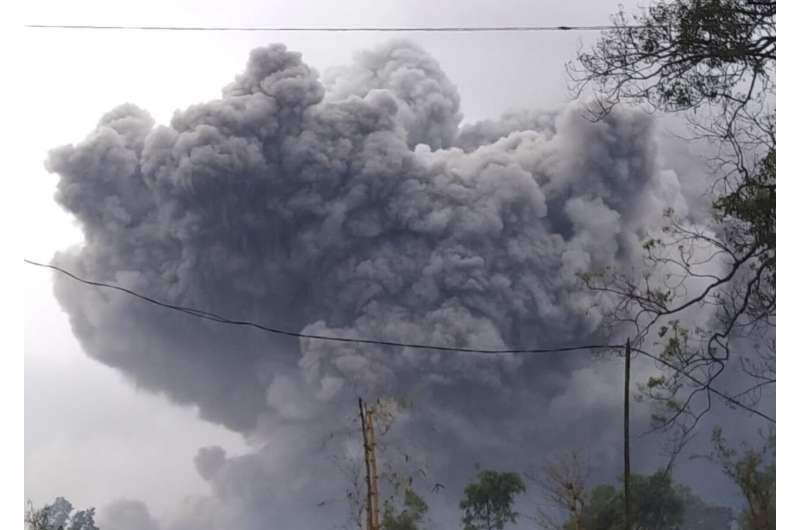
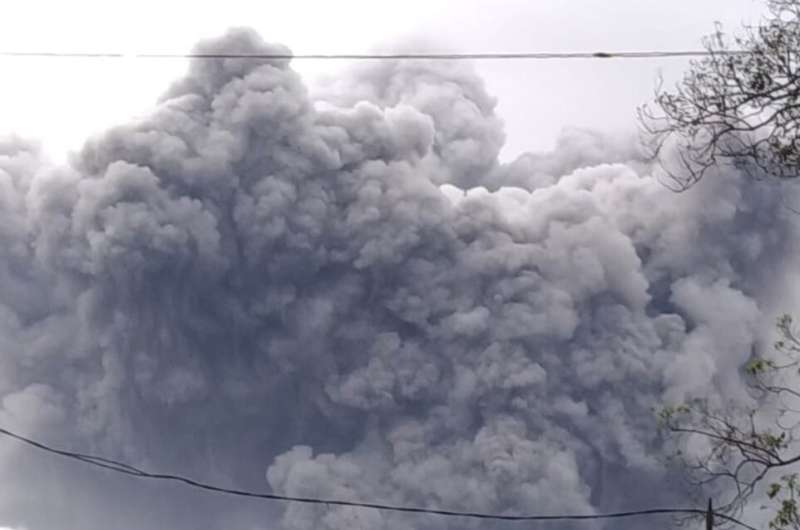 In this photo released by Indonesia's National Disaster Mitigation Agency (BNPB) Mount Semeru spews volcanic material during an eruption in Lumajang, East Java, Indonesia, Saturday, Jan. 16, 2021. The highest volcano on Indonesia's most densely populated island of Java, spewed hot clouds as far away as 4.5 kilometers (nearly 3 miles) on Saturday. (National Disaster Mitigation Agency via AP)
In this photo released by Indonesia's National Disaster Mitigation Agency (BNPB) Mount Semeru spews volcanic material during an eruption in Lumajang, East Java, Indonesia, Saturday, Jan. 16, 2021. The highest volcano on Indonesia's most densely populated island of Java, spewed hot clouds as far away as 4.5 kilometers (nearly 3 miles) on Saturday. (National Disaster Mitigation Agency via AP)